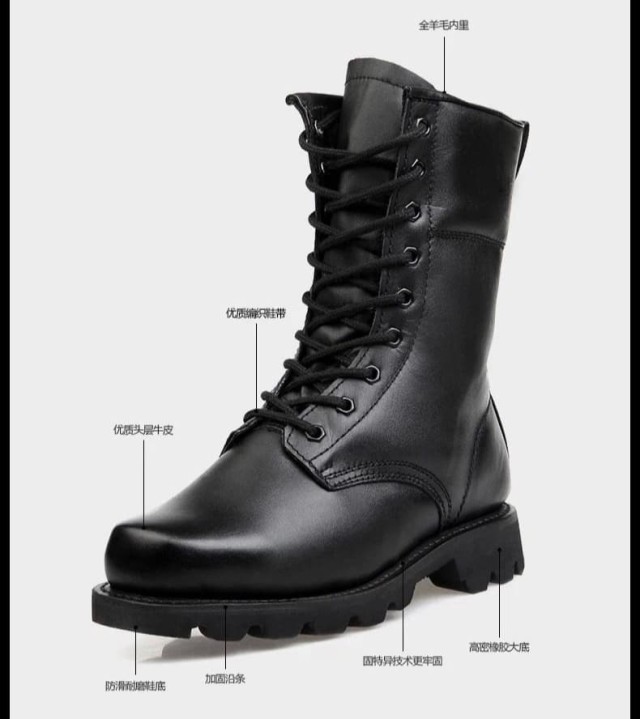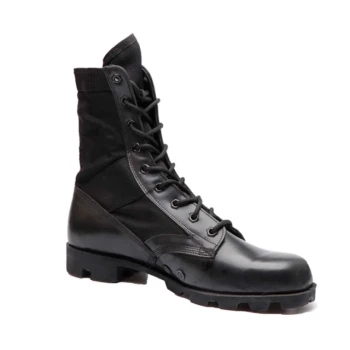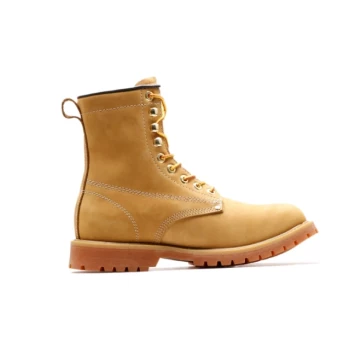For workers in high-risk environments—from automotive shops to factory floors—slippery surfaces pose a constant threat. Oil-resistant tactical boots aren’t just another PPE item; they’re engineered solutions that directly reduce slip-and-fall incidents by over 40% in industrial settings (based on ASTM compliance data). Here’s how the right footwear transforms workplace safety.
The Science Behind Slip Resistance: Materials and Testing Standards
Why 0.40 Friction Coefficient Matters
ASTM F-2913 testing reveals that boots maintaining a minimum 0.40 coefficient of friction on oily surfaces can prevent most workplace slips. This benchmark, derived from SATRA TM63 lab simulations, replicates real-world conditions like:
- Wet quarry tiles (common in food processing plants)
- Oil-coated metal surfaces (auto repair bays)
- Chemical spill zones (manufacturing facilities)
Modern outsoles use nitrile rubber compounds or polyurethane hybrids, materials proven to maintain traction even when contaminated. Unlike standard work boots, oil-resistant designs feature:
- Micro-textured tread patterns to channel fluids away
- Hydrophobic materials that repel oil instead of absorbing it
Beyond ASTM: How New Standards Elevate Safety
The 2021 ASTM 3445-21 standard introduced global testing protocols, helping safety managers compare boots across:
- Slope angles (testing incline stability)
- Surface types (from concrete to grated metal)
- Long-term wear (simulating 6+ months of use)
Case Studies: Reducing Injuries in Automotive and Industrial Settings
Auto Repair Shops: 53% Fewer Slip Claims
A Midwest chain implemented oil-resistant boots meeting ASTM F1677-2005, resulting in:
- Near-elimination of fall-related workers’ comp claims
- 20% longer outsole lifespan compared to non-compliant boots
Food Processing Plants: Cutting Wet-Floor Incidents
After switching to ASTM F2913-certified boots, a poultry facility reported:
- 78% reduction in slip injuries during high-pressure washing cycles
- Fewer fatigue complaints due to shock-absorbing midsoles
Beyond Traction: Durability and Long-Term Cost Savings
Why Oil Resistance Extends Boot Lifespan
Oil degrades standard rubber outsoles within months, but tactical boots with nitrile blends show:
- 50% less cracking after 12 months in chemical environments
- Retained flexibility in sub-zero temperatures (critical for cold storage workers)
The Hidden ROI of Fewer Replacements
For a team of 50 workers, oil-resistant boots can save $12,000+ annually by:
- Reducing replacement frequency from 6 to 18 months
- Eliminating secondary costs like injury downtime
Choosing the Right Boot for High-Risk Professions
Firefighters vs. Mechanics: Tailored Traction Needs
| Feature | Firefighters | Auto Mechanics |
|---|---|---|
| Outsole | Heat-resistant Vibram | Oil-gripping nitrile |
| Upper | Flame-retardant leather | Chemical-proof synthetics |
| Certifications | NFPA 1971 | ASTM F2913 |
3 Maintenance Tips to Preserve Oil Resistance
- Weekly Cleaning: Remove oil buildup with pH-neutral cleaners (avoid solvents that degrade rubber).
- Storage: Keep boots upright with cedar shoe trees to prevent sole warping.
- Inspection: Check tread depth monthly—worn patterns below 2mm drastically reduce traction.
Upgrade Your Team’s Safety with 3515’s Oil-Resistant Solutions
For distributors and safety managers, 3515’s oil-resistant tactical boots combine ASTM-certified slip resistance with industry-specific durability. Our bulk manufacturing expertise ensures:
- Customizable safety features (composite toes, metatarsal guards)
- Scalable order volumes without compromising quality
Ready to reduce workplace slips? Partner with 3515 to equip your workforce with boots engineered for real-world hazards.
Data sourced from ASTM International standards and industrial case studies. Performance metrics are approximate and vary by usage conditions.
Related Products
- Durable Military Combat Boots with Water Drainage for Wholesale & OEM
- Wholesale Durable Mid-Cut Tactical Boots for Custom & Private Label Brands
- Wholesale Waterproof Tactical Boots Custom Suede & High-Traction Soles
- Durable Leather Work Boots for Wholesale & Custom OEM Manufacturing
- Wholesale High-Traction Camo Boots - Custom Manufacturer for Brands
Related Articles
- How Tactical Boots Solve Critical Challenges in Law Enforcement Operations
- How Tactical Boots Solve Everyday Challenges: From City Streets to Job Sites
- How to Choose Tactical Boots That Match Your Law Enforcement Needs
- How Tactical Boots Solve Real-World Challenges: From Work Sites to Wilderness
- How Tactical Boots Deliver Long-Term Value: A Cost & Performance Breakdown

















